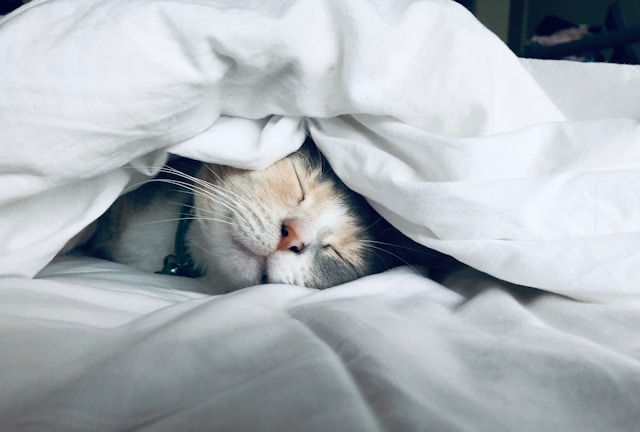Cats have a unique way of expressing their emotions, and one of the most revealing aspects of their behavior is how they sleep. The way your cat curls up, stretches out, or tucks in its paws can provide valuable insight into its mood and well-being. Understanding cat sleeping positions can help pet owners ensure their feline friends are comfortable, happy, and healthy.
Common Cat Sleeping Positions & Their Meanings
Curled-Up Position (Loaf or Doughnut)
When a cat curls into a tight ball with its tail wrapped around its body, it is conserving warmth and protecting vital organs. This position often indicates a sense of security and relaxation. Cats that frequently sleep in this position are likely feeling safe and comfortable in their environment.
Belly-Up (Exposed Stomach)
If your cat sleeps on its back with its belly exposed, it is showing complete trust in its surroundings. The stomach is a vulnerable area, so a cat that sleeps like this is feeling extremely secure. This position also helps cats cool off in warm weather.
Side Sleeping
Cats that sleep on their side with their legs stretched out are in a deep state of relaxation. This is a strong indicator that your cat feels safe and stress-free. Since this position leaves them somewhat exposed, it means they are comfortable in their home and trust their human companions.
Tucked Paws (Meatloaf Position)
In this position, a cat rests with its paws tucked underneath its body, resembling a loaf of bread. This means the cat is resting but still somewhat alert. It may not be in a deep sleep and can quickly become active if needed. If a cat frequently sleeps like this, it may be monitoring its environment while staying comfortable.
Stretched Out (Superman Pose)
A cat lying flat on its stomach with legs stretched forward and backward is completely relaxed. This is often seen when a cat is warm and comfortable. This position allows them to stretch their muscles and enjoy a sense of security in their surroundings.
Sleeping in a Hidden Spot
When a cat chooses to sleep under furniture, inside closets, or in other hidden areas, it may indicate a need for privacy. While this can be normal, frequent hiding might suggest stress or discomfort. It’s important to ensure your cat feels safe and secure in its home environment.
Sleeping on You or Near You
Cats that choose to sleep on or next to their owners are displaying attachment and trust. This behavior is common in affectionate cats who enjoy companionship. They may also be seeking warmth and comfort from their favorite human.
How to Ensure Your Cat Sleeps Comfortably
- Provide Cozy Sleeping Spots: Soft, warm beds or blankets in quiet areas can help your cat feel secure.
- Monitor Sleeping Positions: A sudden change in sleeping habits might indicate discomfort or health concerns.
- Maintain a Routine: Keeping a consistent daily routine helps cats feel safe and promotes healthy sleep patterns.
- Create a Stress-Free Environment: Ensure your cat’s space is free from loud noises, unwanted disturbances, and sudden changes.
Conclusion
A cat’s sleeping position is more than just a cute pose—it’s a window into their mood and well-being. By paying attention to where and how your cat sleeps, you can better understand its emotions and ensure it feels comfortable and secure. If you notice drastic changes in sleeping habits, it may be worth consulting a veterinarian to rule out any underlying issues.









